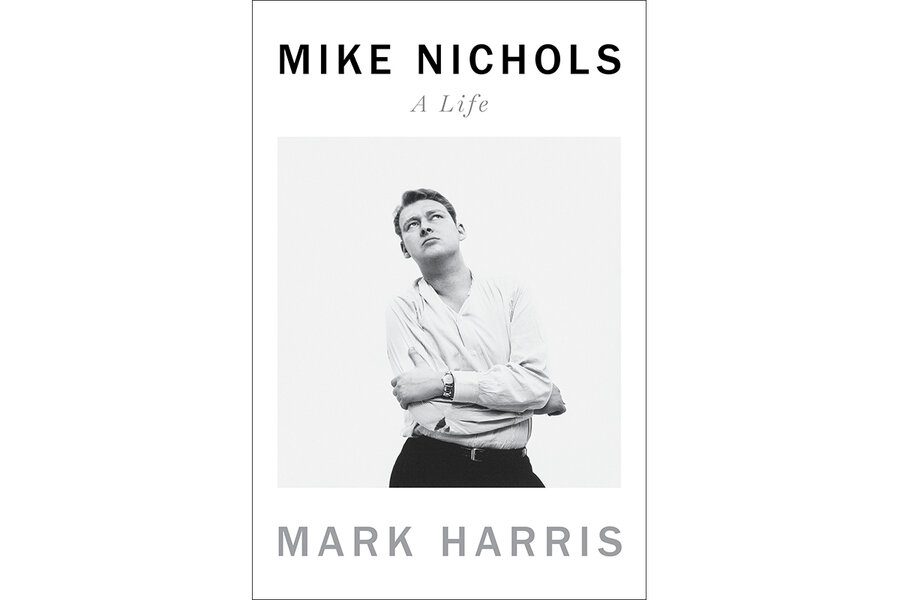‘The Graduate’ director Mike Nichols felt he had something to prove
Loading...
Late in his wonderful biography of Mike Nichols, author Mark Harris describes the director’s life as a “cyclical series of ascents and crashes.” Harris’ book has a cyclical feel to it as well. “Mike Nichols: A Life” is organized chronologically, with most chapters focused on a particular film or theatrical project. Nichols’ early career was a rocket, yielding triumph after triumph. After achieving fame in the late 1950s with Elaine May as the comedy improv duo Nichols and May, he directed a string of successful and acclaimed Broadway plays, including Neil Simon’s “Barefoot in the Park” and “The Odd Couple.” When he decided to try his hand at film, “Who’s Afraid of Virginia Woolf?” and “The Graduate” were the first two movies he helmed.
After an ascent that impressive, a crash was inevitable. The bloated 1970 adaptation of the novel “Catch-22” was Nichols’ first disappointment, but there would be others. (His involvement in 1973’s “The Day of the Dolphin,” in which talking dolphins are trained to be political assassins, is particularly confounding.) In Harris’ hands, though, both the highs and the lows make for fascinating reading.
Harris starts at the beginning. Nichols was born Michael Igor Peschkowsky in Berlin in 1931 – a member of a Jewish family in Nazi Germany. In 1939 he traveled alone with his younger brother to America, where his father was waiting; his mother would follow later. By then, an adverse reaction to a vaccine for whooping cough had rendered him hairless for life. The vulnerability he felt about his situation (he wore a wig) and the guilt over what he called his “unbelievable, undeserved, life-shaming luck” in getting out of Germany before the Holocaust became the central elements of his life.
At the University of Chicago, which he attended for two years and where he met May, Nichols, according to Harris, affected “a style of frosty, bored, hyper-cultured contempt” and a reputation for the “ability to destroy people with a sentence.” While his hauteur was rooted in his own unease, his coolness found its way into the comedy routines he honed with May. In Harris’ words, Nichols and May became “the avatars of a generational shift from the cheerful sitcom brightness of the previous decade to something truer, more troublesome, and more cutting.”
That shift was also apparent in the sensibilities of 1967’s “The Graduate,” which was a sensation upon its release. The unexpected blockbuster, featuring Dustin Hoffman’s star-making turn as the disaffected Benjamin Braddock, a recent college graduate seduced by the wife of his father’s business partner, was regarded as “Hollywood’s first great exploration of the generation gap.”
Nichols was a terror on that movie’s set, condescending and imperious. “When you know exactly what you want to do, it doesn’t make you particularly nice. Sometimes just the opposite: ‘Don’t you get it? Don’t do that – do this,’” he later recalled. “I was a nightmare.” The biography charts his evolution into a warm and generous collaborator and mentor, one who laughed and wept easily. The occasional aloofness remained, as did, throughout his life, Harris writes, “an almost punitive need to prove his detractors wrong.”
This reviewer is as much of a Mark Harris fan as a Mike Nichols fan, and Harris, who’s written two previous works of film history and writes for New York magazine, is in top form here. His command of the theater world and the film industry and his smart and engaging writing (he calls the profligate Nichols “a rich man who enjoyed living like an even richer man”) make the book a pleasure to read.
It is Harris’ 250 interviews, however, that make the biography definitive. While readers can infer he got a “no” from Diane Sawyer, Nichols’ fourth wife and apparently the love of his life, he received a “yes” from almost everyone else, including May, Hoffman, Robert Redford, Candice Bergen, Robert De Niro, Steve Martin, Meryl Streep, Emma Thompson, Tom Hanks, and many more.
Harris covers dark subjects, including Nichols’ depression, cocaine and crack use, and an addiction to the sedative Halcion that led to a severe nervous breakdown. But the focus of the book is the director’s work and, especially, the joy he took in the creative process.
Four decades ago, Glenn Close appeared with Jeremy Irons in the Tom Stoppard play “The Real Thing,” directed by Nichols, and she was upset that Irons had the meatier role. “I remember thinking, Oh, man, I just want to act, I want people to see what I can do. ... Mike didn’t want any of that, of course. He said, ‘Just bring your day onto the stage with you.’” What Close goes on to say is echoed throughout the book, as others describe the mark left by Nichols (who died in 2014): “It has stuck with me my whole career.”








